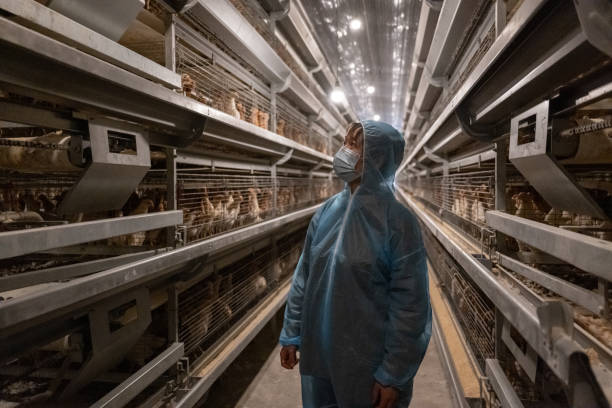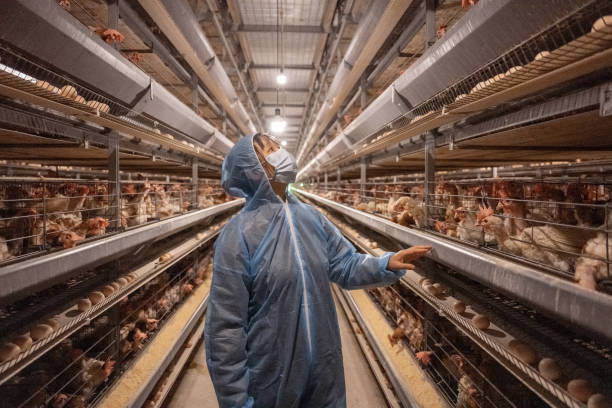Cost-Effective Battery Cage Solutions for 10,000 Layers in the Nigerian Market
Cost-Effective Battery Cage Solutions for 10,000 Layers in the Nigerian Market
Nigeria’s poultry industry is booming, and with that growth comes the need for efficient and cost-effective farming methods. For anyone looking to house 10,000 laying hens, the choice of housing system is crucial. Battery cages, while sometimes controversial, remain a popular option, particularly when considering factors like land constraints, ease of management, and overall cost-effectiveness. This article delves into the world of battery cage solutions specifically tailored for the Nigerian market, offering insights into maximizing profitability while maintaining ethical standards.
First let’s understand why Nigerian farmers consider battery cages. The primary reason is Space Optimization. Land is a precious resource, especially in densely populated areas. Battery cages allow you to house a significantly larger number of birds in a smaller footprint compared to free-range or deep litter systems. For a 10,000-layer operation, this can translate into substantial savings on land acquisition or rental costs, which are significant overheads in Nigeria.
Secondly, let’s look at Ease of Management. Battery cage systems streamline many aspects of poultry management. Feeding, watering, and egg collection are often automated, reducing labor requirements and minimizing the risk of human error. This is particularly important in Nigeria, where skilled labor can be scarce and expensive. Automated systems ensure consistent feed and water supply, contributing to better bird health and egg production.
Also, Disease Control is very important. The confined environment of battery cages, contrary to some perceptions, can actually facilitate better disease control. With proper sanitation protocols and ventilation, the spread of diseases can be minimized compared to open systems where birds have greater contact with the environment and other potential sources of infection. This reduces reliance on antibiotics, leading to healthier birds and safer eggs.
Finally, Cost-Effectiveness is the key. While the initial investment in setting up a battery cage system can be considerable, the long-term cost-effectiveness is a major draw for Nigerian farmers. Lower labor costs, reduced feed wastage (due to controlled feeding), and higher egg production rates all contribute to improved profitability. The quicker return on investment makes battery cages an attractive option, especially for those seeking to scale up their operations.
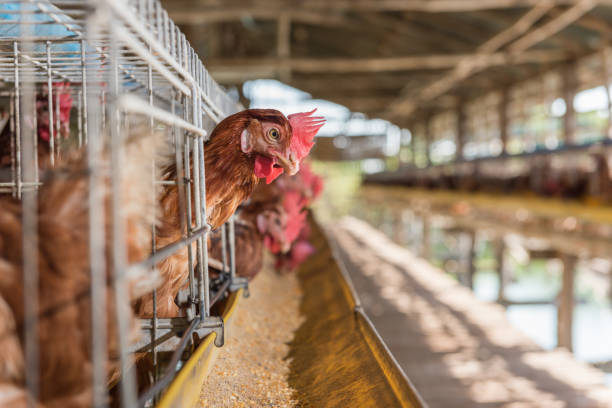
Now, let’s consider the Key Components of a Battery Cage System. A typical battery cage system consists of several essential components. Cages themselves are structured tiers of wire mesh cages, designed to house a specific number of birds per cage. The design should allow for adequate space and easy access to feed and water. Automatic feeding system is very important, as it dispenses feed evenly across all cages, ensuring each bird receives its required ration. This minimizes wastage and promotes uniform growth. Automatic drinking system is another key, providing a constant supply of fresh water through nipple drinkers or trough systems. This is vital for maintaining bird health and productivity. The Manure removal system removes manure from the cages regularly, preventing the buildup of ammonia and other harmful gases. Options include manual scraping, belt systems, or automatic flush systems. Egg collection system is able to automate the egg collection process, reducing labor costs and minimizing egg breakage. Options include manual collection, semi-automatic systems, or fully automated conveyor belt systems. Ventilation system maintains proper air circulation within the poultry house, removing stale air and ensuring adequate oxygen supply. This is critical for preventing respiratory diseases and maintaining bird comfort, especially in Nigeria’s hot and humid climate.
Moving on, what kind of battery cage does Nigerian farmers need? Considering the Nigerian context, certain features are particularly important when selecting a battery cage system.
First, you need to consider the climate, especially in the hot and humid climate, ventilation is absolutely critical. Choose cages designed to maximize airflow and consider investing in cooling systems such as fans or evaporative coolers. You also need to consider material. Cages made from galvanized steel are more resistant to corrosion and rust, making them ideal for the humid Nigerian environment. You need to consider durability. Select cages built to withstand the rigors of daily use and the weight of the birds. A sturdy construction will ensure a longer lifespan and reduce the need for frequent repairs.
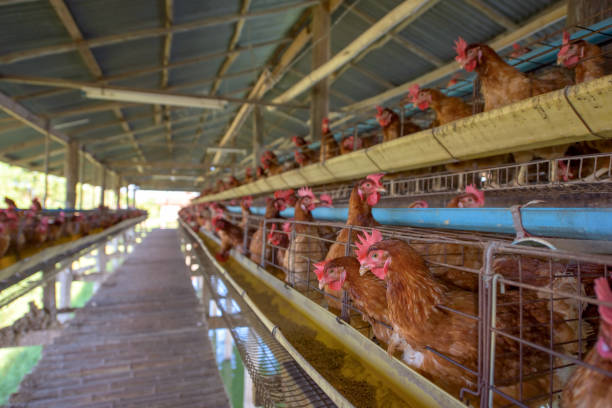
Here are some Tips for Cost Optimization for Battery Cage Systems: Sourcing locally, sourcing cages and equipment from local manufacturers can significantly reduce costs compared to importing. However, ensure that the quality meets your standards. You need to look into automation strategically. While fully automated systems offer the greatest labor savings, they also come with a higher upfront cost. Consider a phased approach to automation, starting with the most labor-intensive tasks like feeding and egg collection. Also, energy efficiency is important. Choose energy-efficient equipment such as LED lighting and high-efficiency motors for ventilation and other systems. This will help reduce your operating costs in the long run.
Let’s talk about what farmers need to pay attention to when managing the Battery Cage System. Proper management is crucial for maximizing the benefits of a battery cage system. You need to pay attention to good biosecurity. Implement strict biosecurity measures to prevent the introduction and spread of diseases. This includes controlling access to the poultry house, disinfecting equipment, and providing clean footwear for workers. You also need to pay attention to regular cleaning and disinfection. Clean and disinfect the cages and equipment regularly to prevent the buildup of bacteria and parasites. This is particularly important in hot and humid climates where disease can spread quickly. The Stocking density needs attention as well. Follow the recommended stocking density guidelines to avoid overcrowding and stress, as overcrowding can lead to decreased egg production, increased disease susceptibility, and behavioral problems. Ventilation management is important. Ensure proper ventilation to maintain air quality and prevent the buildup of ammonia and other harmful gases. Adjust ventilation rates according to the season and the age of the birds. You also need to pay attention to your Birds’ welfare. While battery cages can be a cost-effective solution, it’s important to prioritize bird welfare. Ensure that the cages provide adequate space for the birds to move around, stand, and stretch their wings. Also, provide environmental enrichment such as perches or pecking toys to encourage natural behaviors.
Another thing to consider is the regulatory Landscape. Nigerian poultry farming is subject to various regulations related to animal welfare, food safety, and environmental protection. Familiarize yourself with these regulations and ensure that your battery cage system complies with all requirements. You need to make sure that you avoid potential Pitfalls. One of the most common mistakes is Poor ventilation. Inadequate ventilation can lead to respiratory problems, reduced egg production, and increased mortality. The next common mistake is Overcrowding: Overcrowding can lead to stress, disease, and cannibalism. Another mistake is Inadequate sanitation: Poor sanitation can create a breeding ground for bacteria and parasites. Also, many farmers ignore Maintenance neglect. Neglecting maintenance can lead to equipment failures and reduced efficiency.
Finally, let’s get to the return on investment and profitability. Calculating the return on investment (ROI) for a battery cage system involves considering several factors. Initial investment includes the cost of the cages, equipment, building modifications, and installation. Operating costs includes the cost of feed, water, electricity, labor, and veterinary care. Egg production includes the number of eggs produced per hen per year and the market price of eggs. Other income includes the income from selling manure or spent hens.
To estimate the ROI, calculate the total revenue from egg sales and, also deduct the total operating costs from the total revenue to arrive at the net profit. Then, divide the net profit by the initial investment and multiply by 100 to express the ROI as a percentage. Finally, compare the ROI of a battery cage system to other poultry farming methods to determine its profitability.
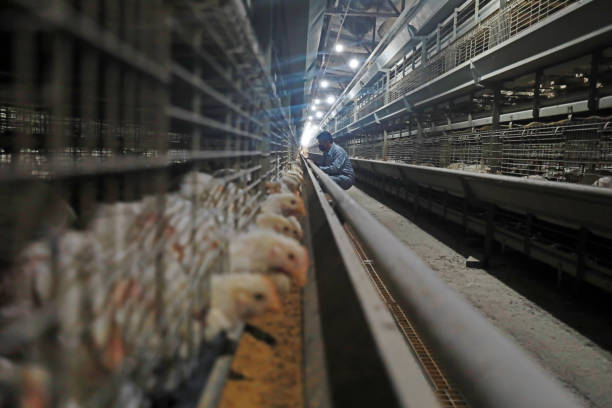
Here are some success stories from other Nigerian farmers: Many Nigerian farmers have successfully implemented battery cage systems, achieving significant improvements in egg production, reduced mortality rates, and increased profitability. One farmer in Oyo State reported a 20% increase in egg production after switching to a battery cage system. Another farmer in Kano State reduced labor costs by 50% by automating feeding and egg collection.
In conclusion, battery cage systems can be a cost-effective solution for housing 10,000 layers in the Nigerian market. By carefully considering the key components, selecting appropriate cages, optimizing costs, and implementing proper management practices, farmers can maximize their profitability while maintaining ethical standards. The Nigerian poultry industry offers immense opportunities for growth, and battery cages, when implemented responsibly, can play a significant role in realizing that potential. Before making any decisions, conduct thorough research, consult with experts, and visit successful poultry farms to learn from their experiences. With careful planning and execution, a well-managed battery cage system can be a sustainable and profitable venture for Nigerian poultry farmers.



